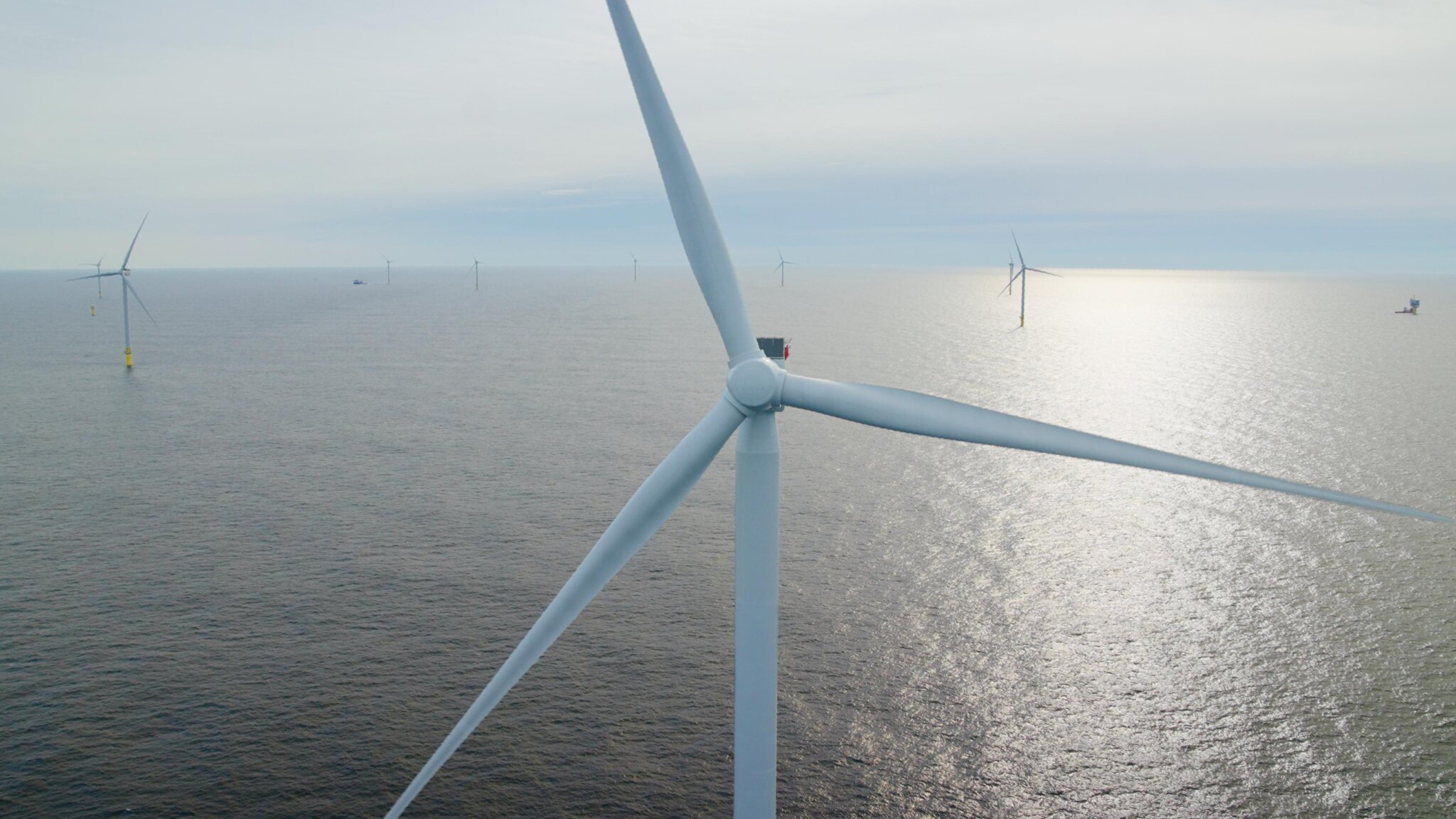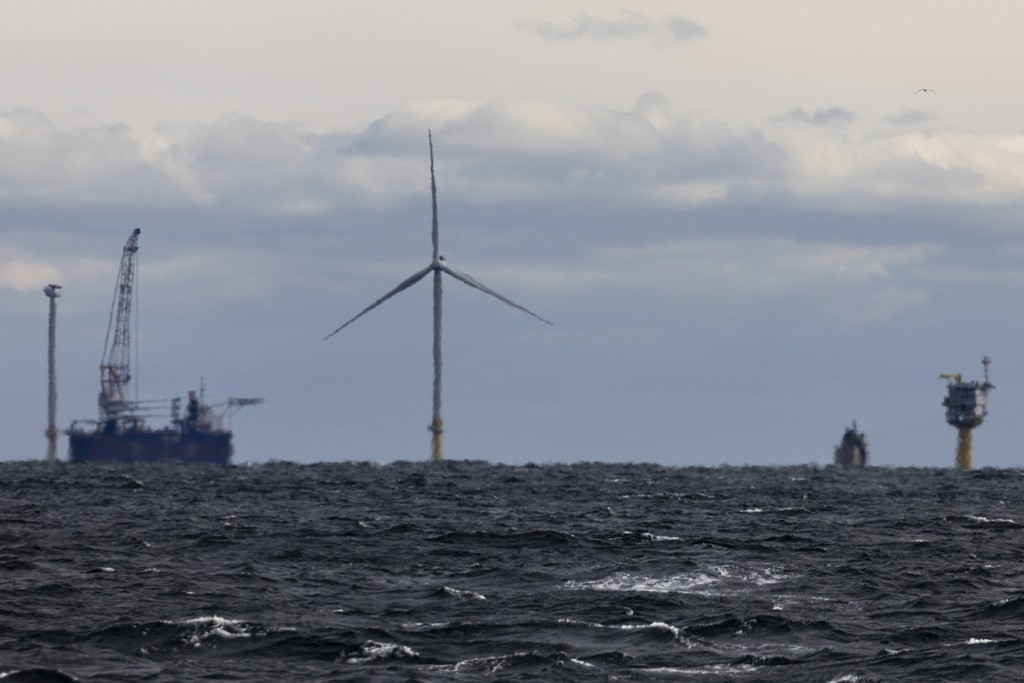South Fork Wind Whirls Into History Off Montauk

South Fork Wind breezed into the history books on March 14 when officials declared all 12 turbines of the nation’s first commercial-scale offshore wind farm were fully operational 35 miles off the Montauk coast.
The 132-megawatt wind farm, which will power 70,000 of the Long Island Power Authority’s 1.1 million customers, took seven years to complete after the LIPA board initially approved the plan. The breakthrough came 20 years after the agency’s leadership initially proposed building a similar project off the coast of Jones Beach — a plan that was scrapped following community opposition.
“This landmark project, right in our backyard, ushers in a new era in clean and renewable energy for our community, our state and our country, now and for future generations,” said Concerned Citizens of Montauk Executive Director Kay Tyler.
While environmentalists cheered green energy making progress and union leaders touted the hundreds of jobs created, commercial fishing groups decried the impact on their industry and Wainscott residents unsuccessfully fought the transmission cable coming ashore in their community. The project helps advance the Biden administration’s efforts to establish a carbon-free electric grid by 2035 and furthers New York State’s goal to have 70% of its electricity sourced from renewable energy in the next six years.
Gov. Kathy Hochul and U.S. Secretary of the Interior Deb Haaland were among the officials who attended the wind farm’s debut. South Fork Wind is projected to eliminate up to six million tons of carbon emissions over the next quarter century — the equivalent of taking 60,000 cars off the road for the next two decades.
The milestone isn’t the first time Long Island played a role in U.S. technological advancements. The region was also the starting point of the first transatlantic solo flight, where researchers discovered DNA and where engineers built the Lunar Module that enabled the first astronauts to walk on the Moon.
“Now we can add South Fork Wind, the nation’s first operational wind farm in federal waters to the history books,” said Long Island Association President and CEO Matt Cohen.
While the approval process dragged on for the better part of a decade, construction moved along relatively quickly. Work began in 2022 leading up to the building of the turbines starting in June 2023 with the final turbine completed in February.
“From the first steel in the water to the final turbine, our hard-working offshore wind construction team has put South Fork Wind on the path to making American energy history,” said David Hardy, Group EVP and CEO Americas of Ørsted, which built the wind farm in partnership with Eversource Energy.
Ørsted CEO Mads Nipper called the opening a major milestone that proves large offshore wind farms can be built, both in the United States and in other countries with little or no offshore wind energy currently. Ørsted, formerly DONG Energy, for Danish Oil and Natural Gas, started aggressively building wind farms off the coast of Denmark, the U.K. and Germany in 2008. The company sold off the North Sea oil and gas assets on which it had built its identity to focus on clean energy, becoming Ørsted. It’s now one of the biggest wind power developers.
South Fork will generate more than four times the power of a five-turbine pilot project developed earlier off the coast of Rhode Island, a subsidized test project. The blades for the 12 Siemens Gamesa turbines reach speeds of more than 200 miles per hour.
“It’s great to be first, we want to make sure we’re not the last. That’s why we’re showing other states how it can be done, why we’re moving forward, on to other projects,” Hochul told The Associated Press in an exclusive interview before the announcement. “This is the date and the time that people will look back in the history of our nation and say, ‘This is when it changed.'”
Group for the East End President Bob DeLuca said, “We applaud the completion of South Fork Wind, and the hope it inspires for both a clean energy future, and a sustaining commitment to meaningful climate action for Long Island, and across New York State.”
With the project online, all eyes are on the horizon for what’s next. The state said last month it would negotiate a contract with Ørsted and Eversource for an even larger wind farm off Montauk, Sunrise Wind, to power 600,000 homes. The Norwegian company Equinor was picked for its Empire Wind 1 project off Long Beach to power more than 500,000 New York homes. Both aim to start providing power in 2026.
More projects are in the planning stages off the coast of LI as well as the Pacific and Gulf of Mexico coasts. Ørsted and Eversource are now turning their attention to the work they will do offshore beginning this spring for a wind farm more than five times its size. Revolution Wind will be Rhode Island and Connecticut’s first commercial-scale offshore wind farm, capable of powering more than 350,000 homes next year. The site where the cable will connect in Rhode Island is already under construction.
The first U.S. offshore wind farm was supposed to be a project off the coast of Massachusetts known as Cape Wind. A Massachusetts developer proposed the project in 2001. It failed after years of local opposition and litigation.
Turbines began spinning off Rhode Island’s Block Island as a pilot project in 2016. But with just five of them, it’s not a commercial-scale wind farm.
Last year brought challenges for the nascent U.S. offshore wind industry, as Ørsted and other developers canceled projects in the Northeast that they said were no longer financially feasible. High inflation, supply chain disruptions and the rising cost of capital and building materials were making projects more expensive as developers were trying to get the first large U.S. offshore wind farms opened.
Industry leaders expect 2024 to be a better year, as interest rates come down and states ask for more offshore wind to meet their climate goals.
The nation’s second large offshore wind farm, Vineyard Wind, is expected to open later this year off the coast of Massachusetts, too. The first five turbines are providing power for about 30,000 homes and businesses in Massachusetts. When all 62 turbines are spinning, they’ll generate enough electricity for 400,000 homes and businesses. Avangrid and Copenhagen Infrastructure Partners are the joint owners of that project.
The Biden administration wants enough offshore wind energy to power 10 million homes six years from now. Interior Secretary Haaland said that “America’s clean energy transition is not a dream for a distant future— it’s happening right here and right now.”
-With Associated Press




